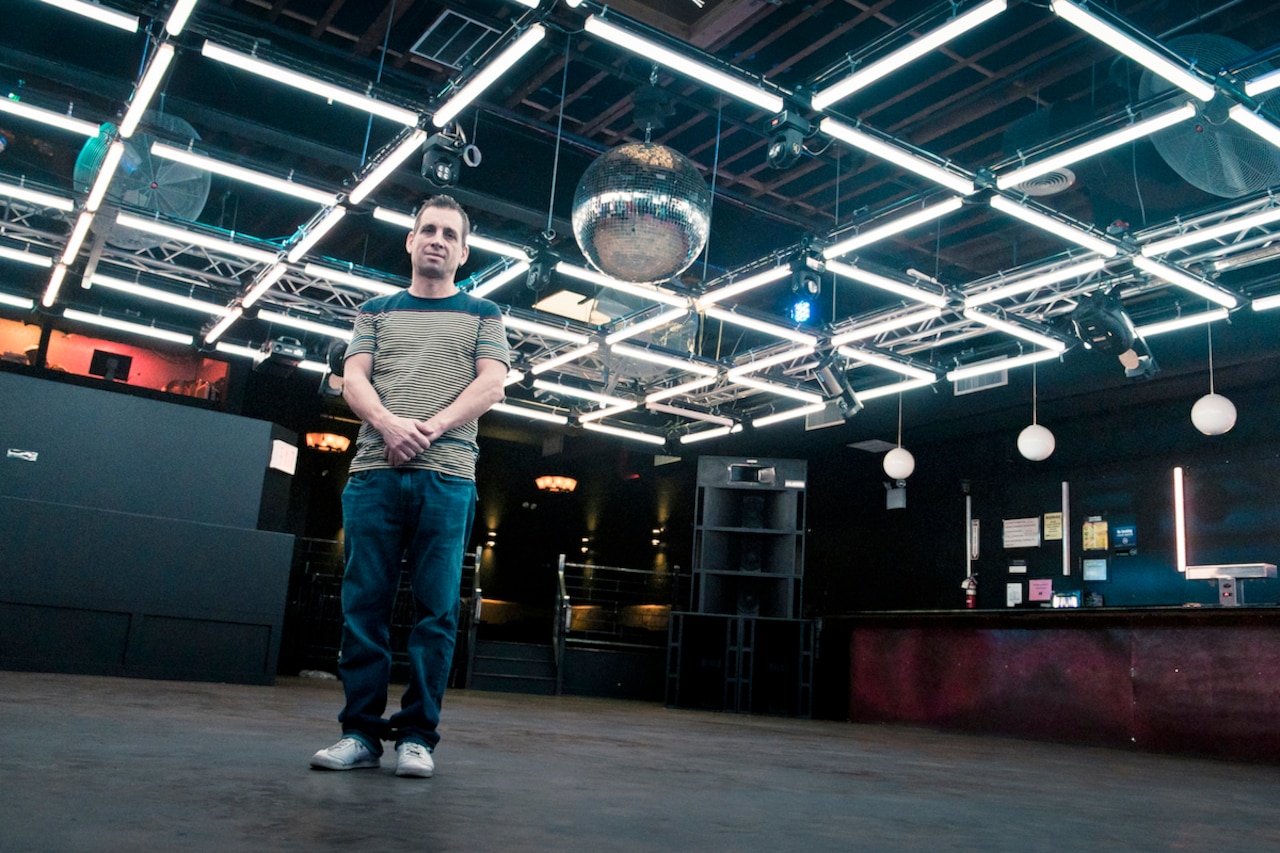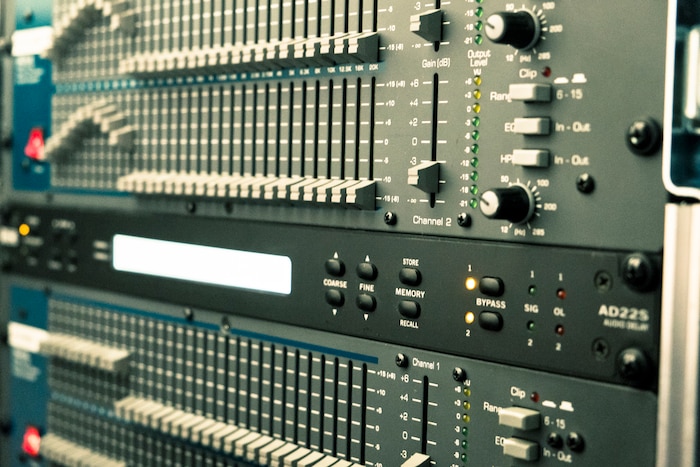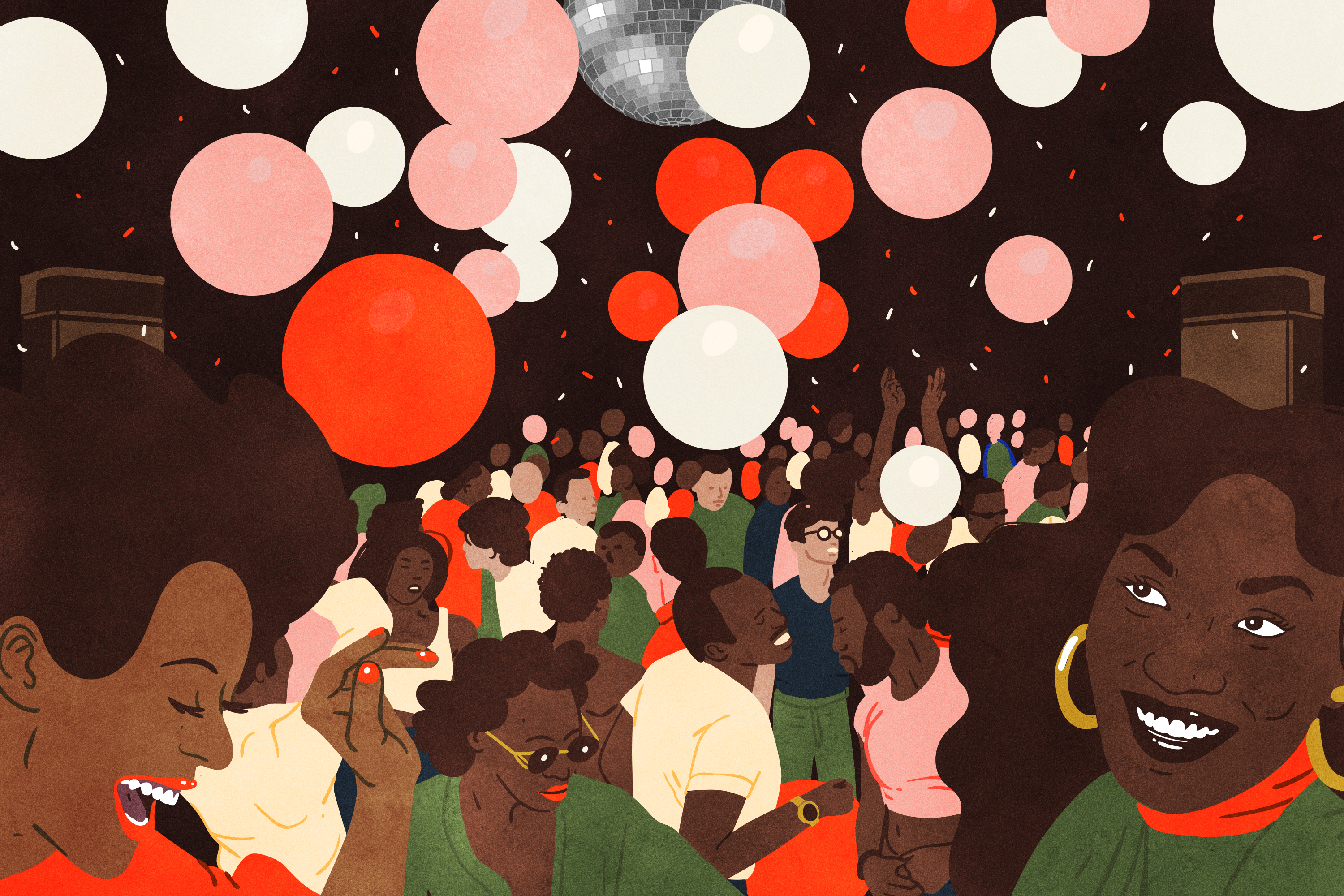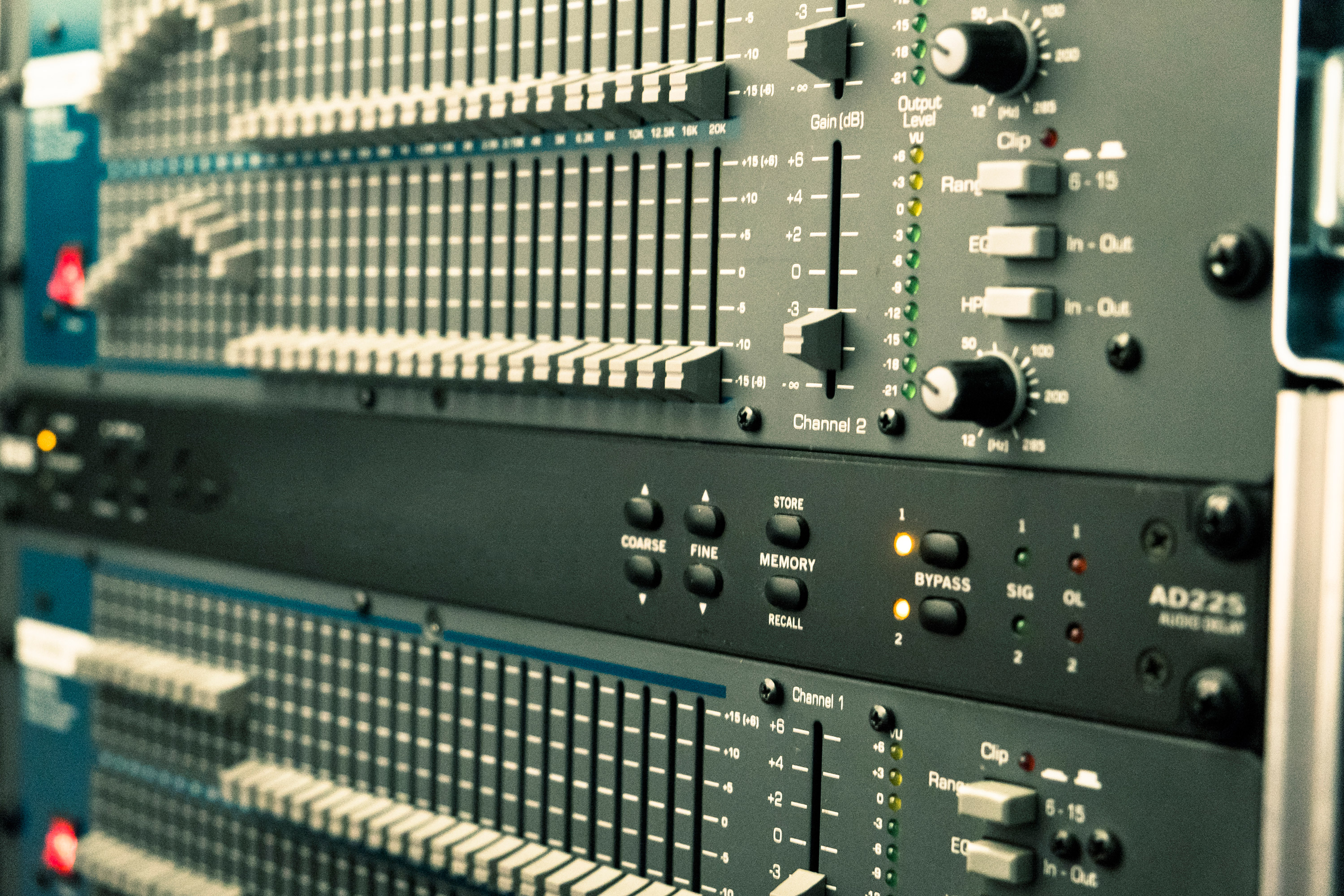
Analog BKNY: Motionless Under The Mirror Ball
Soundsystem designer Craig “Shorty” Bernabeu’s lifelong dig for the perfect mix
At Analog BKNY, a 5,000 square-foot black-box nightclub in Gowanus, Brooklyn, the mirror ball hugs the ceiling as both the visual and aural centerpoint of the room. Standing there under the spinning dots of light while the sound moves through the club, the edges of the speakers disappear, the room dissolves, and the body is overwhelmed with the warmth and nuance of the mix. Shorty, the club’s co-owner and designer of its boutique analog sound system, calls this balance “emotional.” You don’t want to step away.
Craig “Shorty” Bernabeu is a 48-year-old sound-tech veteran born in upstate New York, raised in the hi-fi shops and disco parties of the ‘70s, and thrived on the dancefloors in the house clubs of the ‘80s and ‘90s. For his entire life, Shorty has loved analog sound, whence comes the name for his new club. It’s a rare pairing in a profit-driven era where most clubs are filled with stock speaker systems.
“A lot of these name-brand loudspeakers, it’s the same thing, same voicing, same characteristics in every room,” he says. “Each system won’t work in every room. I’ll go to a room, assess it, hear the natural voicing of what I can do, and I’ll make that happen for that particular room.”
Analog BKNY Specs
8 SBS Slammer Dual 18 Straight Horns
12 SBS Slammer Series I Bass modules
4 SBS Slammer Series I CD-MH Mid High
4 SBS Slammer Series I STA 3H Horizontal Tweeter Arrays
By approaching nightclub sound through studio engineering, and applying that to today’s loudspeaker science, he draws on every phase of his life to realize his vision of what a dance club should be – and what it shouldn’t.
“I used to live in the clubs,” he recalls of the heyday of house music, when he was in his late teens. “Six days a week. And I’ve seen through the years what works. I’ve seen what won’t work. And I’ve been able to see stuff fail.”

Ever the gearhead, Shorty can still remember the amplifier his audiophile dad used during ‘70s dance parties in his childhood home. “It was a Phase Linear, but we called it ‘Flame Linear’ because the amplifiers were always known to catch fire,” Shorty says. Despite the flammability, “they sounded phenomenal.” Shorty started working illegally in audio shops at age 13, a pesky little kid sweeping up wires and dragging speakers and amps out of the warehouse to give to customers.
16 18" horn-loaded sub woofers
12 15" horn-loaded mid bass woofers
4 Mid Range compression drivers
4 fullrange Mid-High Drivers
8 Super High tweeters (Tweeter Arrays)
Five years later, he moved to New Jersey and started working in a hi-fi shop, doing competition car stereo systems. But it was upon his first visits to Zanzibar or Club 88, the clubs that had Richard Long’s renowned sound systems in them, that he fell in love with the depth of Long’s analog audio. There was no turning back.
“With house music, it was a great section from a song, but it would repeat, and they’d build around that and make their song,” says Shorty. “They would use the same four notes and loop that. And there were a lot of arrangements in house music. You listen to Frankie Knuckles or a David Morales Def Mix recording, it was that orchestrated music on top of a pulse.”
3 Amp Racks W/Processing
Power distro Breaker box
Digging deeper into the New York underground, Shorty attended Center for Media Arts in New York City with the intention of learning how to record. But he also wanted to earn enough cred to get a job at NYC’s influential Downtown Records selling vinyl. He says that, again, he pestered the owner until he got a job. That’s where he met coworker Michael Bruno – who’s now his partner and club manager at Analog. After 24 years, Bruno looks back on his friendship with Shorty.
“The one thing I always saw Shorty do was grow with his sound,” Bruno says. “The way he structures the systems, he actually takes each component and develops it. And I’ve always known him to do that. It’s unusual now, but it wasn’t unusual back when I worked at clubs like Heartthrob, Limelight, Fun House, Spirits, Studio 55, Roseland.”

1 SBS Designs Iso-Q2 Advanced Isolating & Focusing EQ (Master Isolator)
2 SBS Designs Iso-Q Advanced Isolating & Focusing EQ (one for each CDJ)
3 SBS Designs VPE-3 vacuum tube phono EQs for each turntable (on-off prototypes exclusive to Analog BKNY)
1 SBS Designs SP-1 High Fidelity valve expander
1 SBS Bad Neighbor (one-off one-of-a-kind bass processor)
2 SBS Thrive Bender Program EQs
2 SBS S3x 3 way system x-overs for the booth & house (exclusively offered to the SBS Slammer)
1 Urei 1620 SBS Modified Sub or Main mixer
2 Lavry DA10 for Pioneer DJM mixer or the Pioneer CDJ 2000 – External Digital to Analog Converter
2 White Instruments 4400A Mastering Eqs - Fullrange
2 SBS Modified Ashly 3102 Program Equalizers
It’s Shorty’s meticulously crafted audiophile gear that lives inside the amplifier system at Analog, which is a callback to those well-respected clubs of yesteryear. He also owns the SBS Slammer brand, under which he develops and builds high-end custom loudspeakers. Again: Analog is full of them.
In 2001, David Morales asked Shorty if he would come up to Montreal. Morales owned a nightclub there called Stereo, where his 16-hour “La Vie en Stereo” sets became the stuff of legend. Shorty saw this as his opportunity to bring components only used in recording and mastering studios to the club setting, but do it on a big scale – big stacks that can give the nightclub oomph and also reproduce the audio with precision. In doing so, he helped win the club a handful of awards.
In the tradition of Stereo, Twilo, and other iconic NYC clubs like The Loft and Paradise Garage, the tweeters at Analog are separated from the subs. Shorty has two custom-made tweeter arrays hanging over the dancefloor, a couple of floating little pods clustered with high-range speakers that hover above the dancers’ heads.
1 Console
1 Pioneer DJM 900 or Urei
3 Pioneer CDJ 2000 Nexus Linked
2 SBS Slammer DIR 118 Subs
4 RCF 15 2 in full-range monitors
2 SBS Slammer SDM 371HF Booth Tweeters
“The tweeter array brings that out and it’ll carry that around the dance floor,” says Shorty. “The way I have it set is, no matter where you stand, the highs just have perfect coverage everywhere. So it just gives you a blend of seamless audio no matter where you’re standing.”
The array gives the illusion of instruments floating around the dance floor, and disperses the high-end evenly. It’s gentler on the ears when instruments like tambourines, crash cymbals, hi-hats, chimes, and other bright sounds emerge. This innovation from the early ‘70s by Alex Rosner, an audio engineer and salesman who is also credited with inventing the first DJ mixer, is part of what makes the sound at Analog so full.
“It is genius,” Shorty says of the tweeter array. “Alex Rosner is a pure genius. He just is. People who are genius are creators. And he’s a creator."
2 BGW GT 3800 Mono Blocks - SBS Modified
1 SBS Thrive Reya Booth Subs – Mosfet Amplifiers
1 SBS Thrive Lena Booth Tweeter amp Class AB Amplifier
Like Rosner, Shorty is serious about building his own amps, EQs, and speakers. Shorty designed products with the high-end studio brand Summit Audio. Together, they created SBS Designs, a high-end solid-state and vacuum tube processing outfit.
His amps and processors are a combination of one-off gear, modified vintage gear, and modified current gear. He even has something called a Bad Neighbor, “a one-off prototype that will never see the day of light.” With this, Shorty can eliminate the rolling and droning sub-bass tone, that has too much hang time on it. For example, it takes a gummy-sounding kick and brings it a foundation, to tighten it up and increase articulation. It’s the first of its kind.
4 Crown MA 5002vz Sub-bass
1 SBS Designs S2 Mid Range
1 SBS Designs S2 Full-range Mid High
1 SBS Designs S2 Super Highs - Tweeter Arrays
2 SBS Designs S6 Thrive Maya Hybrid Main Mid-bass (SBS Slammer Analog BKNY Exclusive)
Not everything is on the vanguard of technology. His four speaker cabinets that sit on each corner of the dance floor are made of dense, Russian Baltic birch that holds up under intense sound pressure. They all use horn-loaded technology, which dates back to the early 1900s. “If you’re over there and I’m trying to call you, I cup my hands around my mouth,” says Shorty. “I’m essentially horn-loading to project the vocals. It’s throwing the sound across the room, which allows me to do stuff with a lot more pure, higher-quality components to get the needed volume.”
In late April, Alex Rosner stopped by Analog BKNY. For Shorty, it was humbling. “To get more than one compliment from him is big,” Shorty says, “and he complimented me more than once. When he saw the midrange speakers, he said, ‘That looks familiar.’ I said, ‘Yeah, it’s an upsize Stanley Screamer.’ He goes, ‘Oh I used to sell that box.’”
He’s talking about the midrange speakers on his stacks at Analog BKNY, a modification of the so-called Altec Lansing Stanley Screamer, a woofer array from the ‘70s. Shorty’s is modified and upsized to today’s technology. It has reflectors in it so the sound doesn’t bottle up when it’s coming off the rear wave of the driver – instead it wraps around and comes out of the cabinet without any kind of blockage along the way.
“I know from being on the floor, I don’t want the midrange pinning my eardrum,” Shorty says. “I want to enjoy what I’m listening to. Because once I step out of the engineering side of it, now here comes the audiophile and the dancer. I’m in the middle of the floor. And the last thing I want to do is feel uncomfortable.”
The deep midbass also contributes to Analog’s distinctive sound. With it you get that tight thud in the chest, but you also get the midrange of the vocal. He plays some big band, some Annie Lennox, “So Long” by Anita Baker and Michael Jackson’s “Earth Song.” All of it sounds like homemade chocolate cake – sweet, rich, emotional, full of nuance.
“We were hearing Michael Jackson‘s breath between each note,” Shorty enthuses when the track is over. “We’ve done two parties. And at both, there were lots of people just standing in the middle of the floor. The promoters were like, ‘There aren’t too many people dancing.’ Yeah, because they’re listening. You go right under that mirror ball and you just stop. People stay there.”
Header image © Justin Jay

